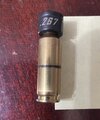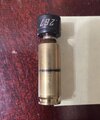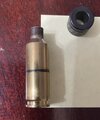JFrank
Member
This seems to be a tireless topic that’s worthy of discussing again.
Neck expander mandrels
I load on a Forster Co-Ax and am currently using Redding Bushing Competition Neck Dies on all my precision calibers. I currently measure the outside diameter of a loaded round and subtract 0.002” for the bushing dimension. Would there be any advantage to using expander mandrels 0.002” below...
www.thehighroad.org




